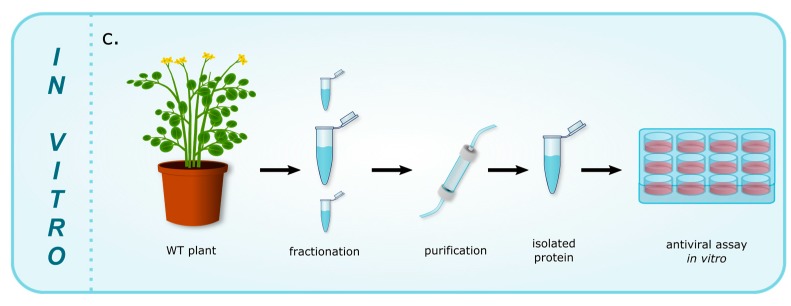Figure 1.
Schematic depiction of different strategies for studying antiviral protein properties. (a) Gene knockout technology employing loss-of-function mutant plants generated by performing genetic manipulations inactivating appropriate gene of interest (GOI); (b) genetically modified (GM) plants produced by the means of genetic transformation overexpressing particular protein of interest. After several days post-inoculation plants from both section (a,b) were compared with appropriate controls and analyzed using different bioassays (e.g., enzyme-linked immunosorbent assay (ELISA), quantitative polymerase chain reaction (qPCR), immunoblotting etc.); (c) isolation of a protein of interest using different fractionation and purification methods (e.g., ammonium sulfate precipitation, cation-exchange chromatography, etc.). Antiviral activity of isolated proteins was then assayed in vitro. In several studies more than one method for investigating protein antiviral activity was performed. The methods shown and described above are simplified for easier understanding of the main concept.


